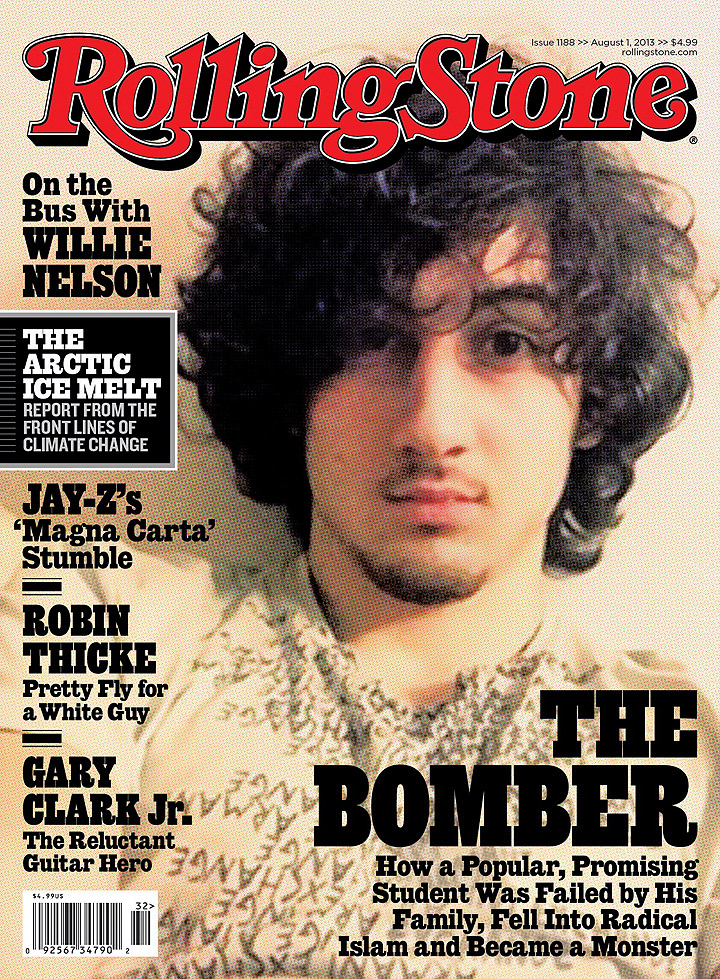VANCOUVER — As angry reactions to Rolling Stone’s feature on the accused Boston Marathon bomber continue to flood social media, some are also defending the magazine’s decision to feature Dzhokhar Tsarnaev.

Hundreds of Rolling Stone readers vowed to cancel their subscriptions on social media after seeing the cover, with many condemning it as “disgusting” and “disgraceful.”
But some media outlets pointed out the importance of exposing the other side of the tragedy.
“The victims of the Boston Marathon bombing deserve our attention, and will continue to teach us about perseverance and the best parts of our common nature. But the dark stories of the bombing need to be told, too. And we need to hear them,” Ian Crouch wrote in his New Yorker article “The Inconvenient Image of Dzhokhar Tsarnaev.”
USA Today also defended the magazine’s journalistic integrity in publishing the article.
“It sounds like a serious effort to find out what could impel a young man to kill indiscriminately. That’s an important journalistic mission, not an effort to glamorize evil,” Rem Rieder wrote in “Don’t stone Rolling Stone over Boston bomber cover.”
However, thousands of people who posted on the magazine’s Facebook page argued that it wasn’t the story that was so offensive, but the celebrity stigma that comes along with gracing the cover of such an iconic magazine.
Megan Shaw said in a comment that garnered more than 5,000 ‘likes’: “You can include the story without glamorizing him by putting him on the cover.”
Gary Romel wrote: “If you want to delve into psychology, how about you look into what impact putting a terrorist / murderer on the cover of Rolling Stone will have on the minds of the next sick glory hound(s)?”
Even supporters and sympathizers of Tsarnaev, who tweet using the hashtag #FreeJahar, didn’t like the cover.
No expletive was spared in the thousands of comments the article generated online, but Rolling Stone stood by its story in a statement posted online.
“The cover story we are publishing this week falls within the traditions of journalism and Rolling Stone’s long-standing commitment to serious and thoughtful coverage of the most important political and cultural issues of our day,” the statement said.
Peak Communicators public relations consultant Chris Olsen said he doesn’t think Rolling Stone was trying to glorify the alleged terrorist in the article, but the editors made a mistake in choosing the cover photo.
“In choosing a cover you highlight the biggest stories” he said. “It’s clear that the article does not glorify him because it calls him a bomber and a monster, but people are upset because they want him to look like a monster and he looks like a normal kid next door.”
Rolling Stone may have forgotten that people react to what they see more than what they read, according to Olsen.
He said the magazine likely didn’t anticipate how much negative reaction would come from the cover, but have reacted respectfully by issuing a statement and posting the article online earlier than planned.
“They are realizing now that they failed to understand how raw the emotions were, but they seem to be doing the right things,” Olsen said. “The article is legitimate, but at this stage if the Rolling Stone had a do-over, I think they would have picked another picture for the cover.”
The Dzhokhar article will undoubtedly cost the magazine subscriptions and sales, as several retailers have announced they will not carry the August issue, but how much the move will impact the brand remains to be seen.
For many, however, the damage has already been done.
James Costello, 30, of Malden, Mass., who needed pig skin grafts on most of his right arm and right leg after the bombing, spoke out against the magazine.
“I think whoever wrote the article should have their legs blown off by someone, struggle through treatment and then see who they would choose to put on the cover.”
The accompanying story, he said, “just seems like a cry for attention” from Rolling Stone.
With files from the Associated Press


Comments